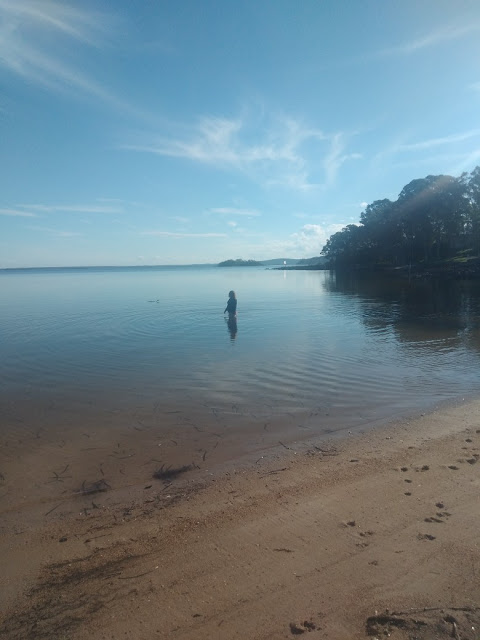Swims near the jetty, fires at night on the cold evenings when the rain poured heavily on the roof, reading in the window seat and writing in the sun on the deck, the beautiful view from the downstairs desk of the glorious wattle in bloom out the window. My time spent at Gunyah on Worimi Country was serene, tranquil, productive and inspiring and the calmness and spaciousness of the house, as well as the water of Port Stephens and bushland at North Arm Cove, were a welcome respite from day-to-day life in the inner-North in Naarm (Melbourne).
While at Gunyah I worked on completing the manuscript of my poetry project Texas.
Texas is set in the shantytown ‘Texas’ which was a camp housing people during the Great Depression in Carrington, Muloobinba (Newcastle). It was a gift to have quiet, dedicated time to work on my manuscript, especially as the mum of two young children.
My routine changed to focus not only on refining my manuscript, but I also became more aware of the local environment – watching the boats go by and the pelicans skimming the surface of the water behind one fishing boat each day, observing when it was low tide and time to wade into the water’s chill for a quick swim, the sun reflecting off the water illuminating seaweed and rocks. The beauty of the sunrise and full moon rising and reflecting off the water…
It was lovely to be able to have my sister Karina accompany me on my residency. Having grown up in Muloobinba (Newcastle), it was also somewhat familiar having done day trips with our parents when we were kids to Karuah and Bulahdehlah, although strangely we had never been to North Arm Cove!

During our time at Gunyah, we visited a number of local areas including Karuah and the Karuah wetland walk; Myall Lakes National Park – in particular the rainforest walk at Mungo Brush and the very special Dark Point Aboriginal Place; Bulahdehlah Mountain where the carved trees are located; Tea Gardens; and Hawks Nest and the spectacular Bennetts Beach. We also drove to the small hamlet of Carrington located right near North Arm Cove which, not only shares the same name as the area of Newcastle I am writing about but was similarly instrumental in the colonial project – Carrington, Newcastle being where the Carrington Coal Terminal is located, and Carrington, Port Stephens the original site of the Australian Agricultural Company.

It was a pleasure meeting and chatting with people at Hero’s Beach, and the North Arm Cove Community Centre about their lives and the local area after walking through the bush to Coffee in the Cove. I even picked up some sweet mustard pickles! There was an abundance of wildlife at Gunyah and surrounding areas to see each day – dolphins, kookaburras, pelicans, butcher birds, wallabies in the garden, and dingoes at Myall Lakes National Park. I braved three winter swims while at Gunyah, which were chilly but delightful!
Gunyah residency report, June 2024












